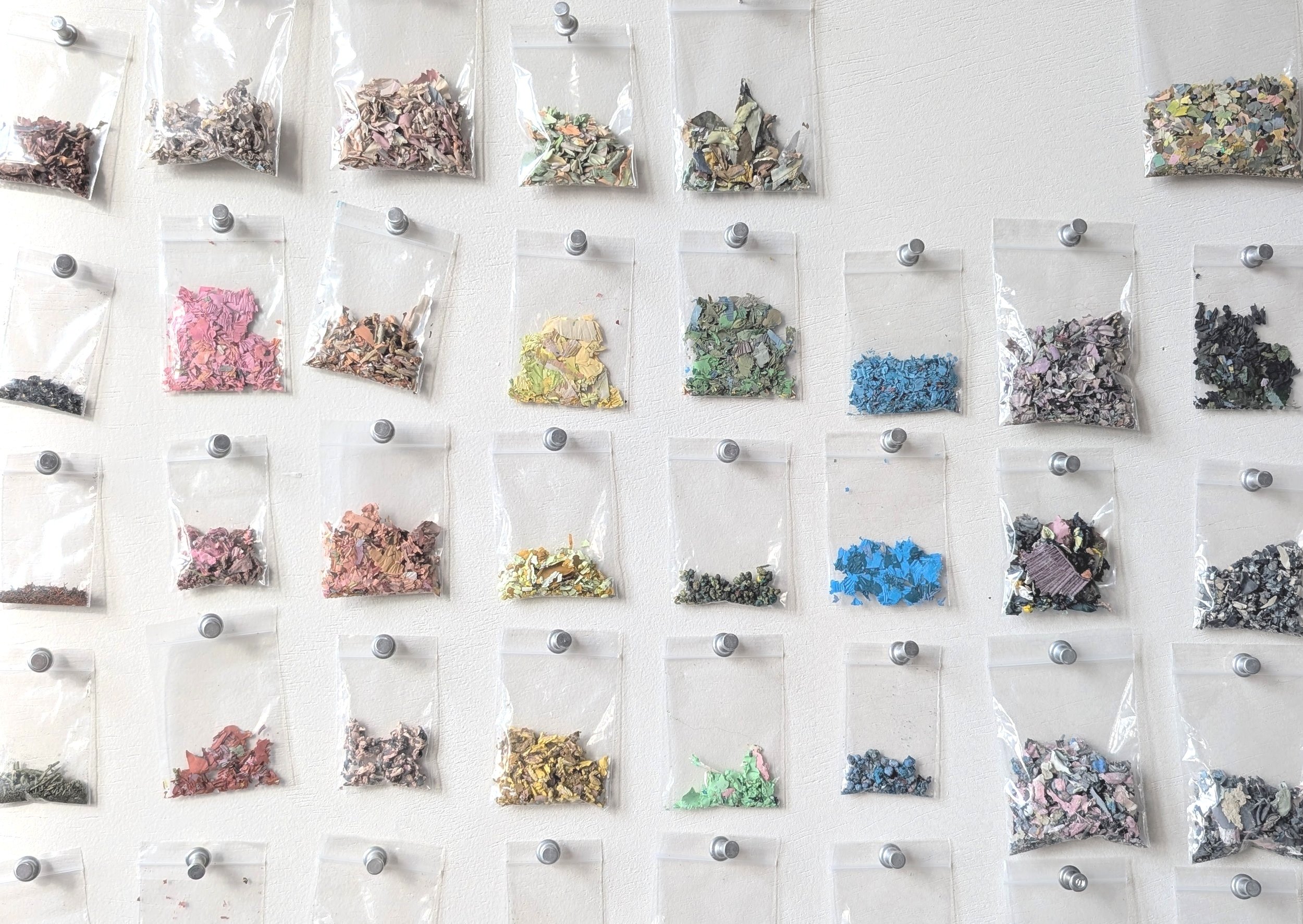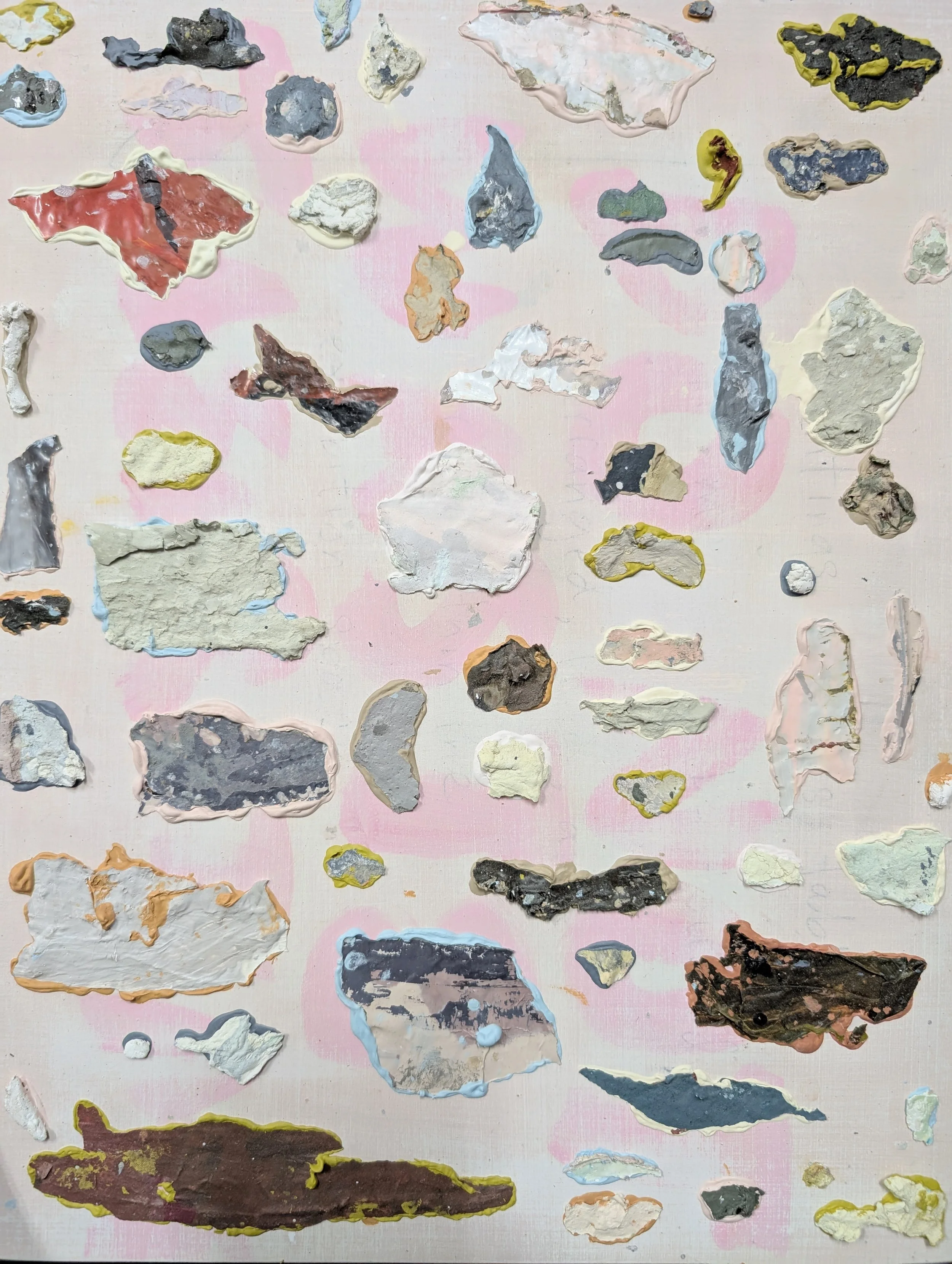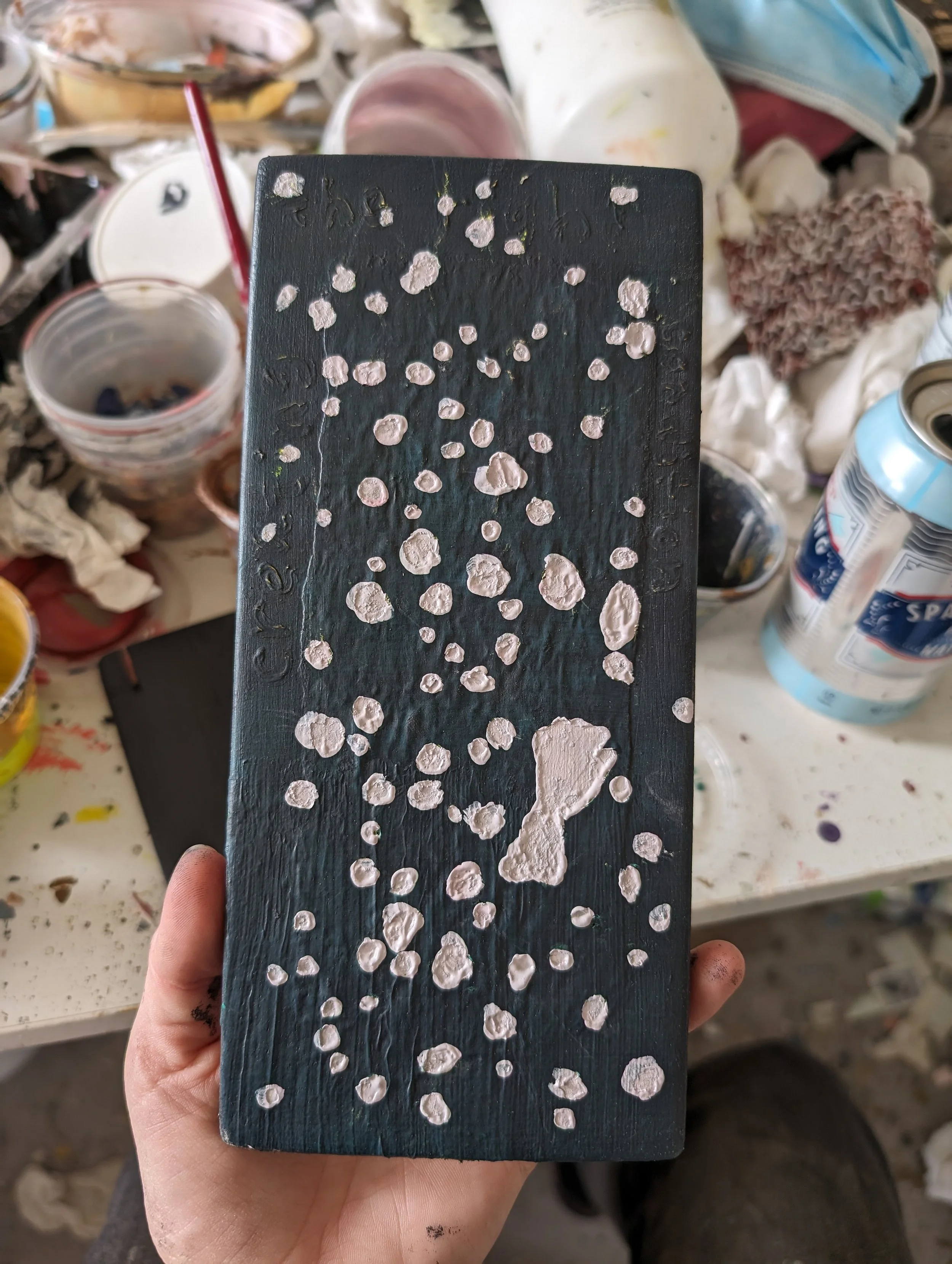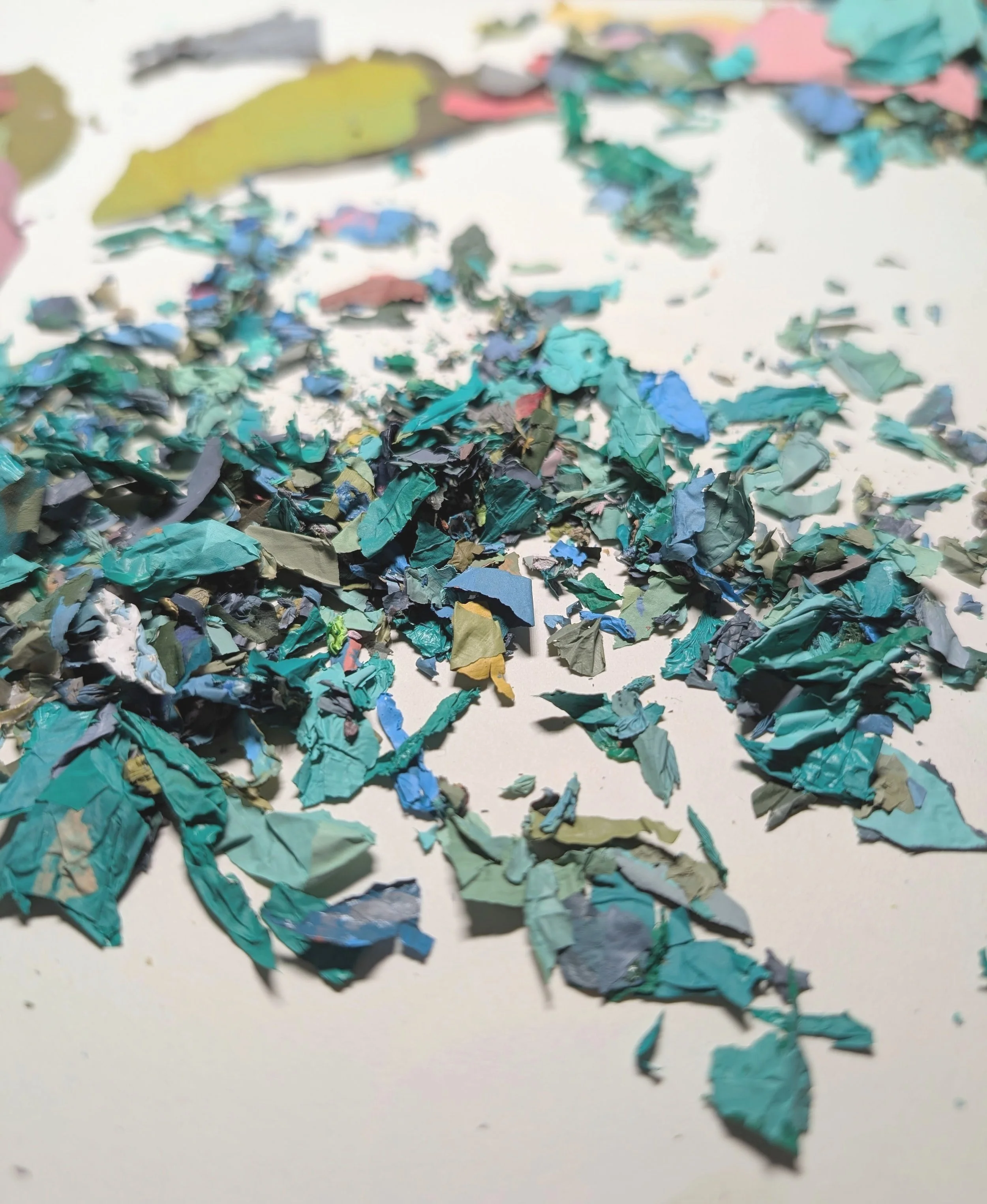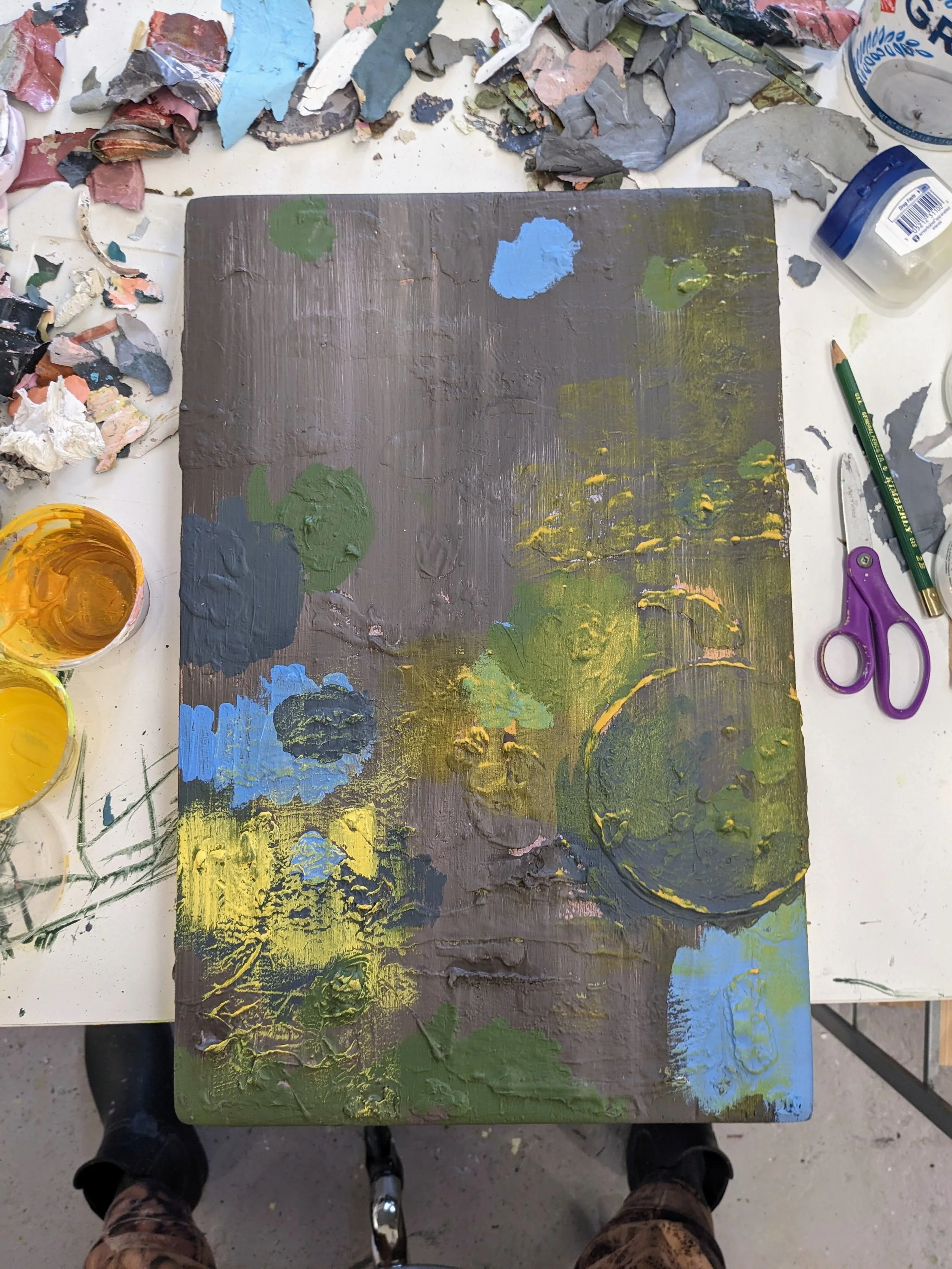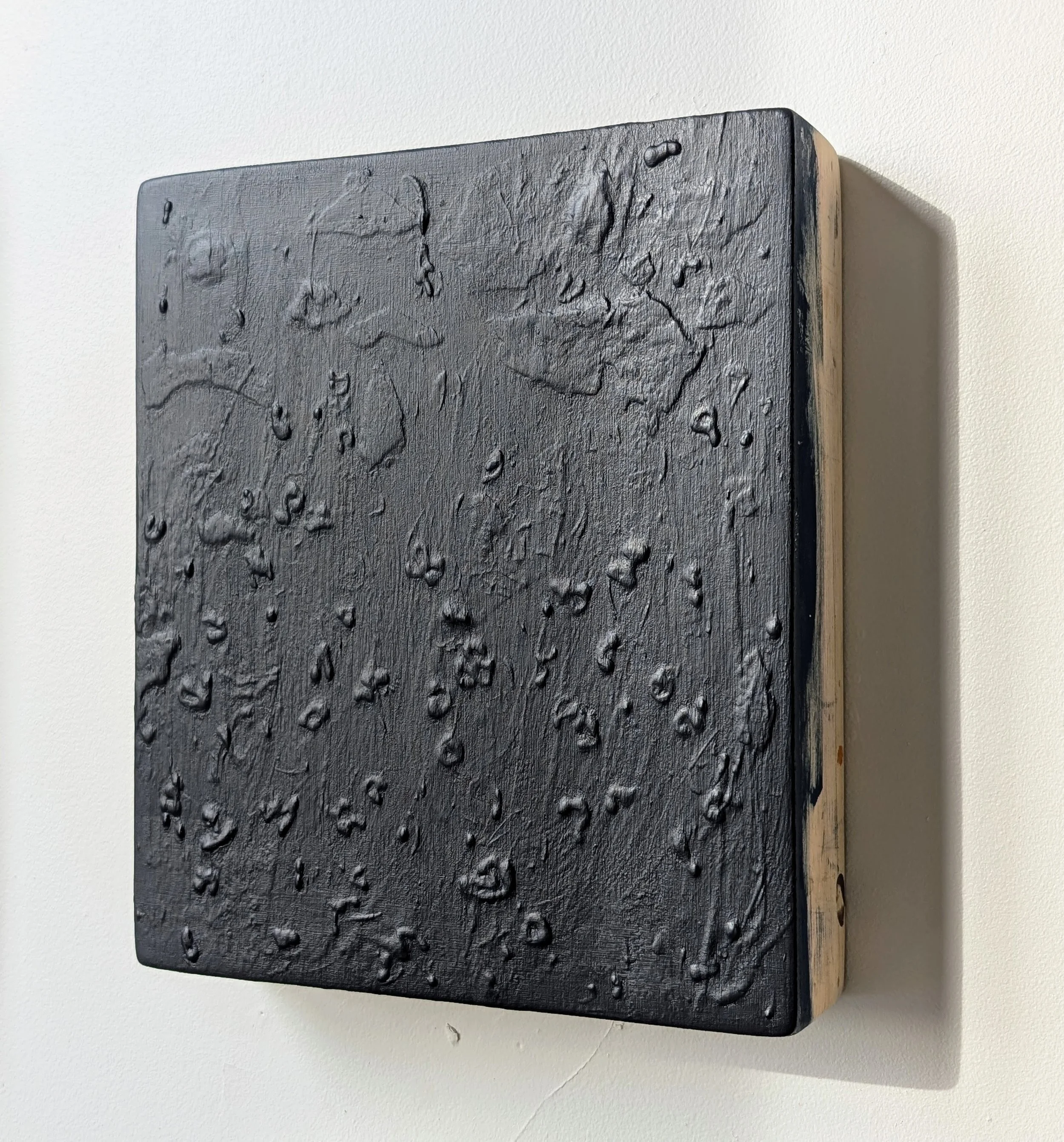How things come about
This page is very much formatted for desktop viewing, and will probably be extra nonsensical when seen on a phone.
Seems it’s always after a piece is done and made that really interesting things start to appear.
The intentionally made work was a mere warm-up, an entry point into the realm where real magic occurs. Finally, the eyes are attuned for seeing the raw material for art.
I hate fresh, new supplies. I hate blank pages and pristine canvases. These things stir up my most painful and counterproductive anxieties about what I should do and what actually deserves to be created. I never have any idea in advance what I’m trying to make, and when I force myself to plan and execute, I end up with a lifeless output.
I do not attempt to create something of my own. Such autonomy feels lonely and sad. I aim to collaborate with the materials and forces around me, to tune myself to the time and place, to allow myself to be a medium through which greater and truer ideas than my own can emerge. My goal is to all but disappear.
But most of the time I am woefully conscious of my individual existence. I… I… I… I am. And so I struggle through it.
One of the biggest challenges is deciding when to push beyond what is obvious, comfortable, or pleasing, and when to indulge. For most of my life, I’ve erred on the side of the former. When I started allowing myself to pick, peel, and collect paint, though, I not only found neurotic delight — I entered new conceptual territory that aligns with my worldview and ethics. I don’t remember much about actually raising beef cattle, but a farmer mentality is deeply engrained in me. Waste nothing. Save and repurpose stuff. Invent instead of spending money. The detritus is not dust, but seed. I sow, propagate, graft, and clone. Heirlooms, hybrids, mutants.
The work happens on the common ground between science and agriculture, theory and application, knowledge and purpose. The studio is a lab and a barn.
Remnants, residue, particles, chaos, accumulation, conglomeration, contamination. Degradation, disintegration, wear and tear.
Recycling and compost. Cross-pollination. Incubation.
The products embody (but never depict) metabolism, osmosis, decay, dissolution, fusion, sedimentation, erosion. Oh yes, so much erosion. (More on that to follow.)
My paintings are cross-sections, strata, samples, slides. Biopsies, petri dishes, x-rays, dissections. Litmus tests. Offspring.
Liquid and solid states
Viscosity
Cohesion, adhesion
L A B T T M P
E R E H H A U
F E A A I K R
T U N N E P
O M T G O
V O I A O S
E R F N I N E
R E U Y
S L -
Normal chaos of work space—
Plastic cups and lids stolen from Chipotle
Other containers courtesy of Mom
Bits of paint peeled and picked from plastic cups
Baggies of semi-organized paint scraps
Dirty water from cleaning brushes, to be evaporated
Found objects for use as stencils, etc.
Vessels for beverages
Tiny wooden surfaces for spontaneous experiments
Trash that I’ve just forgotten to discard
c
h
a
n
c
e
a
r
r
a
n
g
e
m
e
n
t
s
attraction - - - - - -
layers - - - - - - - - - - -
ooze - - - - - - - - - -
- - - - - - - - repulsion
- - - - - - - revisions
- - - - - - - - - - - fill







